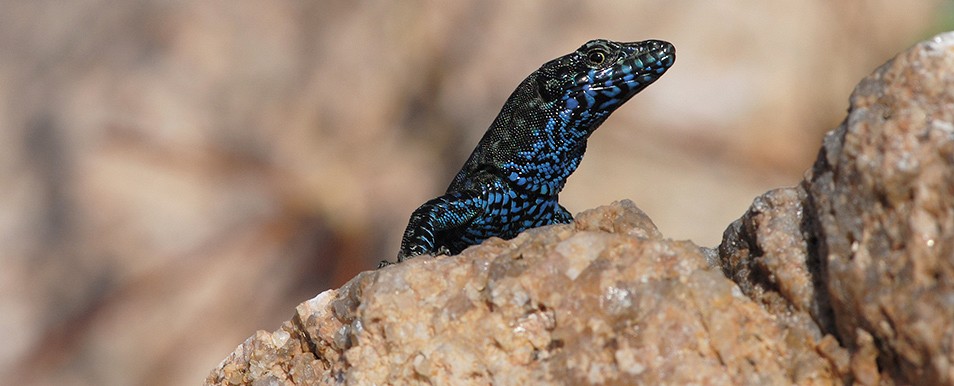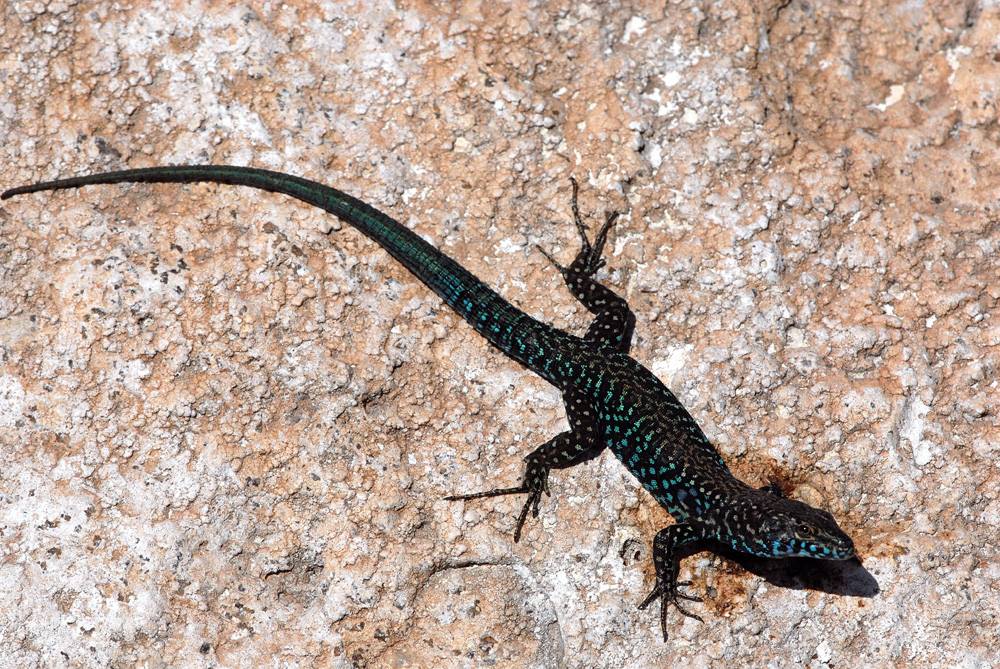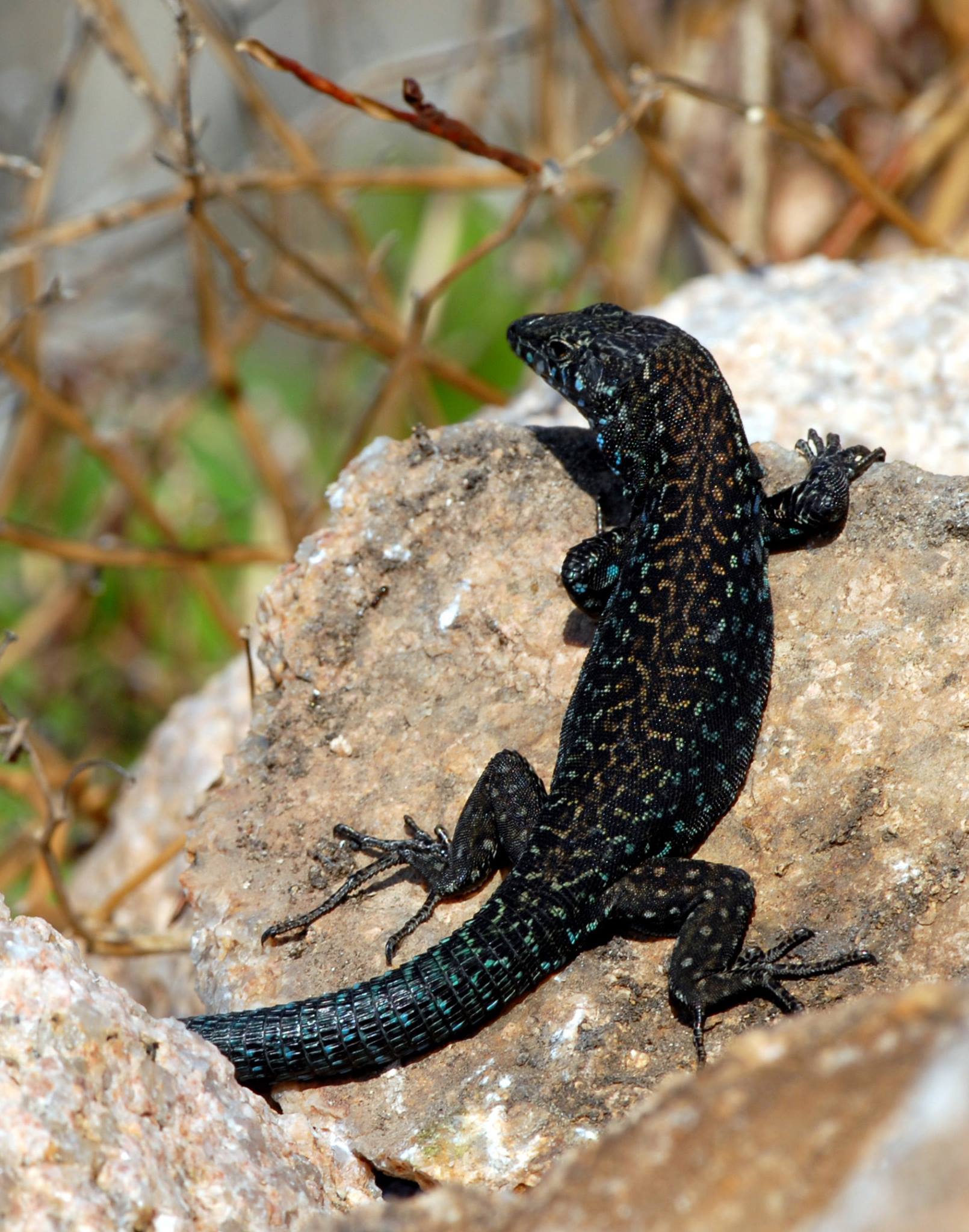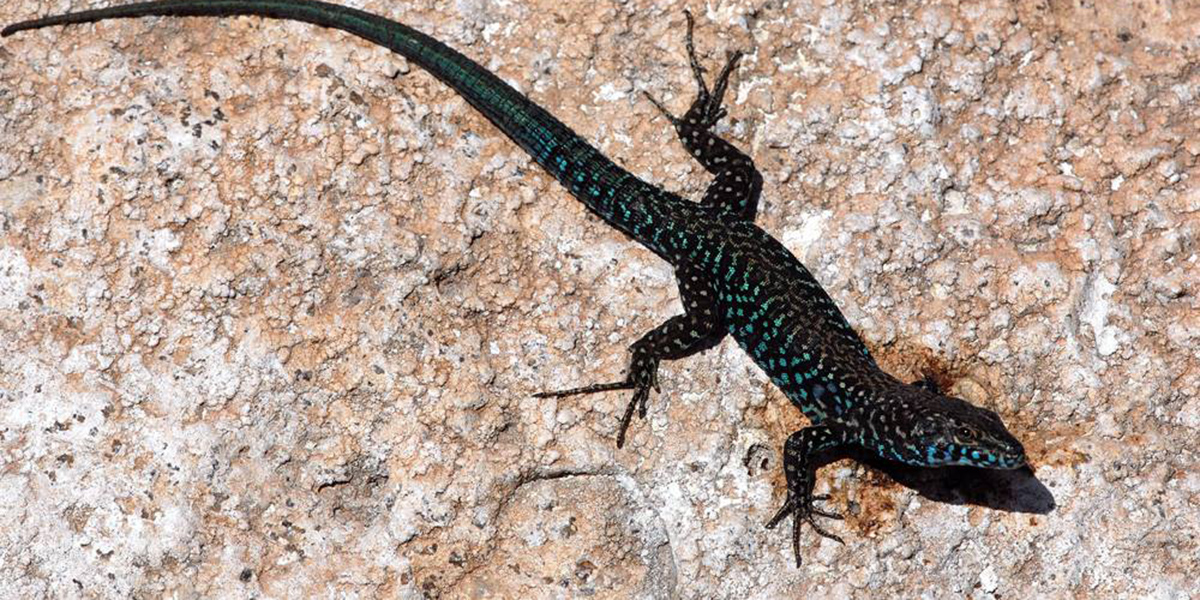Molarottto’s blue lizard
It seems absurd, in some ways, but it’s all true! The lizard you see in the picture is unique in the world and lives only in Italy, or rather in Sardinia, or better … on a rock off the coast of Olbia. More precisely, exclusively on the small rock of Molarotto, where he lives in large numbers. It’s the lizard of Molarotto.
Browsing Sardinia, Gallura’s scientific magazine from Valorizzare, takes you to discover fascinating factors of the entire Gallura territory. The lizard we discover today is a species to defend and protect. Fortunately, it is not possible to land on the rock. It is a ranzii subspecies of Podarcis tiliguerta. It is a superendemism, being a subspecies of a species which is itself endemic to Sardinia and Corsica. The very dark livery, dotted with light blue, makes it extraordinarily and unexpectedly camouflaged on slit-filled granites, especially when the bright sunlight exacerbates the contrasts. It was at the center of a search for the Marine Protected Area of Tavolara Punta Coda Cavallo.
Its population falls entirely within the integral protection area and makes it particularly significant for the conservation of biodiversity. Biology and eco-ethology of the subspecies are compared with the populations of Podlarcis tiliguerta from the other islands of the WAP and the mother island. The results of the morphological analysis indicated that the males of ranzii differ from the other populations, both islands and of the two main islands (Sardinia and Corsica). Females, on the contrary, seem similar to the populations of Sardinia and most of its satellite islands. Genetic analyzes reveal some degree of differential differentiation from the nominal subspecies.
Insight:
The lizard is a subspecies of the “Tyrrhenian Lizard". Let us therefore deepen the subject.
(Taken from the Sardinia Region – Sardinia Environment)
Podarcis Tiliguerta, photo of Sardinia environment
Podarcis tiliguerta
Phylum: Chordata
Class: Reptilia
Order: Squamata
Family: Lacertidae
Sardinian name: Tilicherta, lugesti, cilighelta, cabixedda
Distribution area: It is a Corsican Sardinian endemism, present also in the small islands, whose presence is traced back to the first phase of the populated fauna of the island, the upper Miocene. In Sardinia there are also two subspecies of P. tiliguerta: the P. tiliguerta ranzii, present in the Islet of Molarotto (Olbia) and the P. tiliguerta toro, found in the Isolotto del Toro (Sant’Antioco).
Identification: The Tiliguerta can reach 24 cm in length including the tail, usually the males have larger dimensions .. It is a lizard with a small and not flattened body, usually with convex or slightly keeled scales. The head is triangular and not very distinct from the neck, with the little pointed snout and the tympanum clearly visible. The tail is almost twice as long as the trunk and the rings are almost the same height. The coloring of the upper parts varies from green to brown, brown – yellowish, greenish-yellow; the ventral parts can be whitish, yellowish, pinkish, pale orange, with black sub-rib spots. It has clear sucraceous striae, sometimes interrupted by dark spots, usually present in both sexes. There may be 2 to 7 blue spots on the sides. Some adults have a yellowish dorsal colouration with black reticulations and are free of superciliary striae, others are characterized by the brown dorsal stria and the green background color
Habitat and Ecology: The species is widespread and is found both at sea level and at high altitudes, in Sardinia up to 1800 m on the Gennargentu. Its habits lead it to prefer dry rocky areas in the scrub, cultivated land, dry stone walls, the edges of roads and fields. Like the other Lacertids it is diurnal and predominantly insectivorous, it feeds on flies, orthopterans, moths, berries and drupes, oligochaetes and gastropods. Quite agile and fast, it can cohabit with the rural lizard especially in cultivated areas and in ruderal environments. In places where the two species coexist, the tiliguerta seems to use the available resources better. Winter latency begins in late autumn and lasts until the second half of March. It is predated by micro-mammals, various birds and some snakes.
Reproduction: The males are territorial, especially in spring, in the reproductive period; mating generally takes place between March and April, later in mountain areas, mostly in May. It lays 5 to 12 ovaloid, whitish-colored eggs, from which, after 2-3 months, the little ones shell out, which at the end measure 5-6 cm.
Threat factors: Fires, habitat reduction.
Conservation status: Species not threatened with extinction. The variants present at Molarotto and on the Isolotto del Toro are instead vulnerable.





